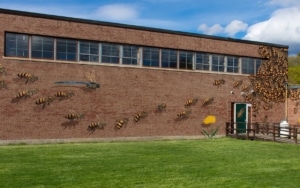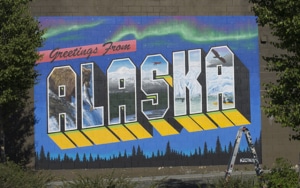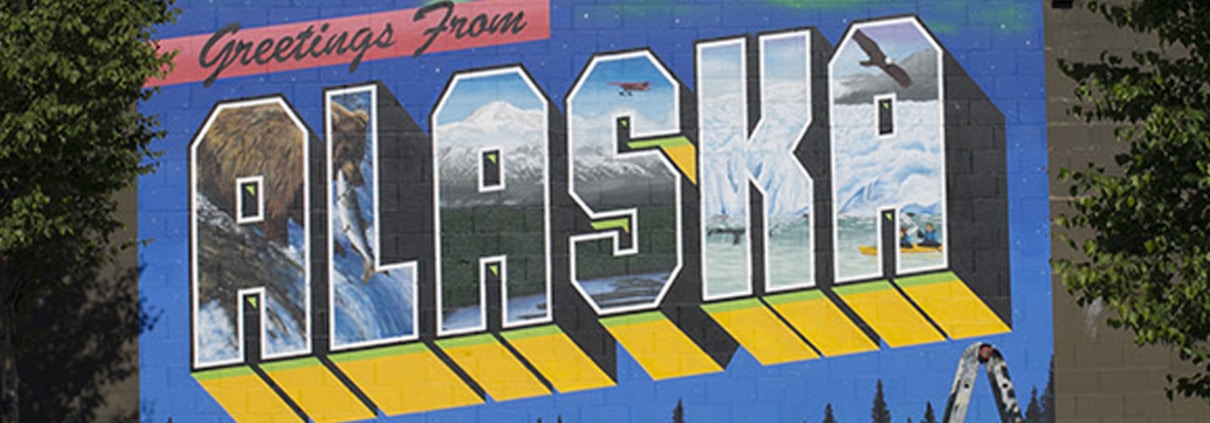STREET ART – CAN I TAKE A PHOTOGRAPH?
Street Art is artwork that is displayed on buildings, streets, walls, doors, windows, buses, trains, and on other public surfaces. When applied to walls or barriers, street art is commonly referred to as a mural. Street art traces its origins to graffiti and vandalism which were historically denounced as illegal and lacking in artistic merit. However, in the past decade or so there has been a significant shift of street art to the mainstream. One court recently noted that “street art” has “blossomed into far more than spray-painted tags and quickly vanishing pieces . . . painted by rebellious urbanites. In some quarters, it has become high art.”
COPYRIGHT INFRINGEMENT
Copyright laws exist to protect the rights of artists in their works. The issue of whether street art is protected under U.S. Copyright laws has recently been decided in favor of the artists. Copyright ownership gives the holder of the copyright the right to: 1) reproduce and make copies of an original work; 2) prepare derivative works based on the original work; 3) distribute copies to the public by sale or another form of transfer; 4) publicly perform the work; 5) publicly display the work, and 6) perform sound recordings publicly through digital audio transmission.
Because it is displayed in public areas, street art is easily copied by anyone with a camera or cell phone. Indeed, some public art, like that of mural artist Colette Miller, is specifically designed for the public to immerse themselves in by taking photos of themselves or “selfies” with the artwork. The act of photographing a copyrighted work does not itself constitute copyright infringement under the U.S. Copyright laws. However, the way in which that photograph is subsequently USED determines whether the photograph infringes the copyright owner’s rights.
THE “FAIR USE” EXCEPTION
Photographs of copyrighted street art that fall within the “fair use” exception do not constitute infringement and are permitted. Personal use of a photograph depicting copyrighted street art falls within this exception. Incidental use, where the artwork is virtually unrecognizable, appears for only a moment, or is not the main purpose of the image also fall within the fair use exception. In contrast, unauthorized commercial use resulting in income to someone other than the artist is generally prohibited.
The following illustrations provide some guidance on what is and is not appropriate.

Good of the Hive mural in Peterborough, New Hampshire
CASE STUDY #1
Buzz is a budding entrepreneur. He started a business offering pollination as a service, deploying boxes of bees on-premises to help farmers increase crop yields. On a recent trip to Peterborough, New Hampshire, Buzz came across The Good of the Hive mural by Matthew Willey. Buzz takes a photograph of the mural and decides to use it as the background photo for his business’ website. Because Buzz intends to use the photograph for commercial purposes, that use is infringement of Willey’s copyright.

Greetings from Alaska mural in Anchorage, Alaska
CASE STUDY #2
Disheartened after his divorce, Sal is convinced by his friend Dean to quit his job, sell his belongings and buy an RV to travel the 50 states. On their travels, Sal and Dean encounter several “Greetings From” murals by Victor Ving and Lisa Beggs, including the Greetings from Alaska mural in Anchorage, Alaska. The design and beauty of each mural encountered captivates Sal and Dean. Sal takes a photograph of each mural and uploads it as his Facebook Cover Photo until encountering the next one. Although Sal is technically re-publishing the work, the use in question is personal rather than commercial. As such, it likely falls within the fair use exception. However, what if Sal were to later author a book based on those travels using the photographs? That would change the nature of the use to commercial and, without the author’s written consent, constitute copyright infringement.
CASE STUDY #3
Kylie is a social media influencer with 10 million followers on Instagram. Because she has access to a huge audience and can persuade others to act based on her recommendations, companies pay Kylie to post photographs of her using their product on Instagram. One of the companies that pays Kylie for posting images of her using their product is GreenCow Energy Drinks. GreenCow just released a new watermelon flavored energy drink. Kylie decides that it would be a good way to promote the new watermelon flavored energy drink by taking a selfie holding the drink in front of the Watermelon House by Wade Wilson (not to be confused with Deadpool) and Robert Banaszak in Washington, DC. Given the facts presented, Kylie’s use appears to be “commercial” rather than personal and would most likely constitute copyright infringement.
MARTIN IP IS HERE TO HELP
These are just a few examples of common situations that arise in the context of photography of street art. Every situation is fact sensitive. If you have concerns about copyright infringement relating to street art, contact us to see how we can help.



